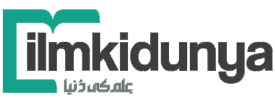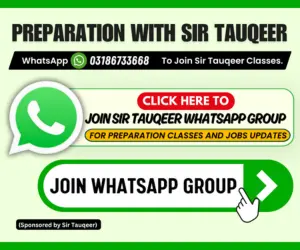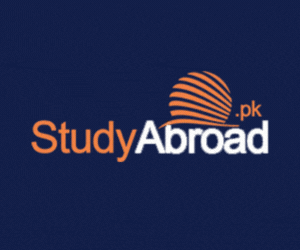-
 Home
Home
-
 News
News
Latest Educational News Stories
Daily update of all national, international news, picture stories, college / university announcements and educational events.
-
 Colleges
Colleges
Pakistan's Largest Database of Colleges and Universities
Explore Largest Directory of Private and Govt. Colleges, Universities and find best institute for your future Education.
-
 Courses
Courses
-
 Admission
Admission
-
 Lectures
Lectures
-
 Online Test
Online Test
Short Question
- 9th Class Physics Short Questions
- 9th Class Chemistry Short Questions
- 9th Class Math Short Questions
- 9th Class Biology Short Questions
- 9th Class Computer Short Questions
- 9th Class English Short Questions
- 10th Class Physics Short Question
- 10th Class Chemistry Short Question
- 10th Class Math Short Question
- 10th Class Biology Short Question
- 10th Class Computer Short Question
- 10th Class English Short Question
-
 Past Papers
Past Papers
-
 Date Sheets
Date Sheets
-
 Results
Results
Exam Results 2024
Check online Results 2024 Matric Inter BA BSc B.Com MA MSc M.Com CSS PCS MCAT ECAT of all educational boards and universities in Pakistan
-
 Study Abroad
Study Abroad
Study Abroad Programs and Opportunities for Pakistani Students
Explore free study abroad search to find programs, consultants, events to study in USA, UK, Australia, China, Malaysia and many others.
-
 Jobs
Jobs
-
 Tutors
Tutors
-
 More
More
-
 Apps
Apps
ICOM Part 2 English Medium Principles of Banking Chapter 9 MCQ's Test
Start Chapter 9 TestICOM Part 2 Principles of Banking Chapter Wise Online MCQ's Test
MCQ's Test For Chapter 0 "Principles of Banking Icom Part 2 English Medium Chapter 9 Online Test"
Try The MCQ's Test For Chapter 0 "Principles of Banking Icom Part 2 English Medium Chapter 9 Online Test"
-
Total Questions15
-
Time Allowed20
Question # 1
Bill of exchange doesn't involved trade dealing.
Question # 2
Payment of sight bill is made on.
Question # 3
The person in whose favour the rights of recieving the amount of cheque transferred:
Question # 4
If drawing of a cheque signs o its back for transferring the rights to another person is called
Question # 5
The types of local or home trade are.
Question # 6
Bank pays money at its counter for:
Question # 7
What is written on the leaf of a cheque about customer
Question # 8
Term "or oreder" is written in order cheque after:
Question # 9
Bank or incomplete bill is called.
Question # 10
Inland sight bill of exchange is usually used in.
Question # 11
Who can endorse the cheque:
Question # 12
When cheque is cashed then its main foil is given to:
Question # 13
A cheque which can be cashed by its holder
Question # 14
A cheque which cannot be cashed at bank's counter
Question # 15
In case of non-negotiable instruments, the rights can:
ICOM Part 2 English Medium Principles of Banking Chapter 9 MCQ's Test
Top Scorers Of Chapter 0 "Principles of Banking Icom Part 2 English Medium Chapter 9 Online Test" MCQ`s Test
-
H HASEEB Ali 02 - Mar - 2024 00 Min 07 Sec 15/15 -
H Hassan Abid 22 - Jun - 2022 01 Min 42 Sec 15/15 -
S Saad 17 - Jul - 2021 02 Min 01 Sec 15/15 -
M Muhammad Rafay 17 - Jul - 2021 02 Min 06 Sec 15/15 -
A ADNAN 17 - Jul - 2021 02 Min 39 Sec 15/15 -
K KHALIL UR REHAMAN 13 - Aug - 2022 03 Min 01 Sec 15/15 -
A Adeel 17 - Jul - 2021 10 Min 50 Sec 15/15 -
A ameer 13 - Jul - 2021 10 Min 50 Sec 15/15 -
B Baal 16 - Jul - 2021 01 Min 08 Sec 14/15 -
S Shehryar iqbal 16 - Jul - 2021 01 Min 50 Sec 14/15 -
K KHALIL UR REHAMAN 13 - Aug - 2022 02 Min 14 Sec 14/15 -
A Ahmed shujah 16 - Jul - 2021 02 Min 14 Sec 14/15 -
Y Yggygygyb 17 - Jul - 2021 02 Min 49 Sec 14/15 -
T Teiyr 11 - Nov - 2025 02 Min 54 Sec 14/15 -
U Ummayy Kalsoom 17 - Apr - 2022 04 Min 04 Sec 14/15
| Sr.# | Question | Answer |
|---|---|---|
| 1 | The person who accepts the bill of exchang is. |
A. Debtor
B. Drawer
C. Payee
D. None of these
|
| 2 | A cheque which can be cashed by its holder |
A. Bearer
B. Order
C. Crossed
D. Plain
|
| 3 | When cheque is cashed then its main foil is given to: |
A. Bank
B. Customer
C. Government
D. None of these
|
| 4 | Official empowered by theGovt. attest the negotiable instruments by his seal. |
A. Gazette officer
B. Notary public
C. Public attorney
D. None ofthese
|
| 5 | Endorsee of cheque is a person |
A. Who receives the amount of cheque
B. In whose favour the rights of cheque are transferred
C. On whom the cheque is drawn
D. Who draws a cheque
|
| 6 | Bill of exchange doesn't involved trade dealing. |
A. Trade bill
B. Accommodation bill
C. Both a and b
D. None of these
|
| 7 | Endorsment of a cheque is always: |
A. Written
B. Oral
C. Written and registered
D. All of the above
|
| 8 | The bill of exchange who's tenor is more than three month is. |
A. Sight bill of exchange
B. Foreign bill exchnage
C. Long bill exchange
D. Short billof exchange
|
| 9 | Bank pays money at its counter for: |
A. Bearer cheque
B. Order cheque
C. Both (A) & (B)
D. Crossed cheque
|
| 10 | In case of non-negotiable instruments, the rights can: |
A. Be tranferred
B. Not be transferred
C. Be conditionally transferred
D. All of the above
|
| 11 | Payment of sight bill is made on. |
A. Demad
B. Fixed period
C. Expiry
D. Presentation
|
| 12 | The bill whihc is payable on its presentation is called. |
A. Sight bill
B. Time bill
C. Trade bill
D. Accommodation bill
|
| 13 | Crossing of cheque is cancelled by |
A. Drawer
B. Drawee
C. Holder
D. All of the above
|
| 14 | Cheque is a written order of customer to: |
A. keep the amount
B. Transfer the amount
C. Pay the amount
D. Recieve the amount
|
| 15 | Cheque is a credit instrument which is |
A. Negotiable
B. Conditionally negotiable
C. Non negotiable
D. None of the above
|

















